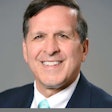When you walk into a dental practice, you can feel its culture almost immediately. Before a single word is spoken, it’s present in the tone of the conversations, the posture of the team, and even the energy that greets you in the reception area.
Some practices radiate calm confidence and connection; others feel tense or transactional. Whether we realize it or not, that difference is culture in motion.
 Kelly Tanner, PhD, RDH.
Kelly Tanner, PhD, RDH.
I’ve worked in dentistry for three decades, and I’ve walked into hundreds of offices: some that function like symphonies, others that sound more like static. The difference isn’t luck or personality. It’s leadership. It’s intention. It’s the daily choice to shape the emotional climate of the practice. Because in every dental office, culture happens by design or by default.
If we don’t design it, it will design itself, from old habits, unspoken expectations, and what we allow to continue. Every practice has a culture. The real question is: Is yours intentional?
What culture really means
When we talk about culture, it’s easy to think of motivational posters or team-building days. But real culture goes much deeper. It’s the unwritten rules, the tone of communication, and the shared understanding of “how we do things here.”
Culture shows up in the small moments: the way the doctor responds when a schedule falls apart, how a team member is treated after making a mistake, or how the receptionist greets a nervous patient. These moments create patterns, and those patterns define the emotional climate of the office.
It’s not just a feeling, culture is a system. Culture influences performance, retention, stress, and, ultimately, patient care. Studies consistently show that workplaces with healthy cultures experience higher engagement and lower turnover.
In dentistry, where precision and collaboration are essential, culture directly affects the quality of care and patients' trust in the team. In other words, culture isn’t a soft skill. It’s a business strategy.
Why culture must be designed
Every team is made up of individuals with different personalities, motivations, and communication styles. Without an intentional structure, these differences can lead to friction, misunderstandings, or disengagement.
When culture is designed, those same differences become strengths -- diverse perspectives that drive creativity, empathy, and innovation. Designing culture means setting a clear tone for how the team operates: not through control, but through alignment. It’s about saying, “Here’s who we are, here’s what we value, and here’s how we treat one another.”
When that clarity exists, decisions become easier, conflicts are resolved faster, and people feel safer to contribute ideas. Without it, teams drift. Gossip fills the silence, communication breaks down, and accountability fades. That’s what “culture by default” looks like, and it’s far more common than we admit.
As a consultant, I’ve seen practices with the best technology and clinical teams with impeccable clinical skills struggle simply because the culture wasn’t intentional. They had the right systems but the wrong emotional climate. The result? High turnover, low morale, and inconsistent patient experiences.
Contrast that with a practice I visited recently where every team member started the morning by checking in, not just with logistics but with one another. “How’s everyone feeling today?” “What’s one thing we’re grateful for?”
It took five minutes. But those few minutes built a connection, lowered stress, and reminded everyone they were part of something bigger than a schedule. That’s culture by design.
Designing culture with your team
Culture cannot be handed down like a policy manual, it must be co-created among the team. The most powerful cultures are those built with the team, not for them. When people help design the culture, they feel a sense of ownership. They protect it, nurture it, and hold one another accountable for it.
Create space for open dialogue.
Ask questions that invite reflection and honesty: What makes us proud to work here? What do we want our patients to feel when they walk in the door? What do we want to be known for as a team? These conversations often reveal what’s already working and what’s not. They bring unspoken frustrations into the light and transform them into shared goals.
Collaborate to define the practice’s core values.
Not the words you think sound good but the ones that describe who you are at your best. Maybe it’s compassion, consistency, communication, or growth. Once those values are clear, translate them into behaviors. If respect is one of your values, what does that look like in action? Starting meetings on time? Listening without interruption? Following through on commitments?
Weave those values into the daily fabric of the practice.
Talk about them in team huddles. Celebrate them in real time when someone models them. Discuss them when challenges arise. Values only matter if they live in conversation.
Culture design is an ongoing practice. Just as we recalibrate equipment or review clinical protocols, we must revisit our culture regularly. As teams grow and new people join, the culture evolves. When leaders and teams make reflection part of their routine, they prevent drift and maintain alignment.
Most importantly, remember that culture design is not about perfection, it’s about presence. It’s about creating a safe space where people feel seen, supported, and valued. When teams feel emotionally safe, they communicate better, perform better, and care better.
The role of leadership
The leader’s emotional tone sets the standard for everyone else. Whether you’re a dentist, practice manager, or lead hygienist, your behavior communicates what is acceptable every single day.
When leaders respond calmly to challenges, the team learns composure. When they admit mistakes, the team learns accountability. When they recognize effort, others learn to do the same. Leadership is not about authority, it’s about influence.
Emotionally intelligent leadership is particularly powerful in shaping culture. Leaders with high emotional intelligence understand their own triggers, empathize with others, and communicate with clarity. They listen to understand, not just to respond. They approach conflict with curiosity rather than defensiveness.
I once worked with a doctor who decided to lead differently after realizing how much tension his reactivity caused. He began every morning with a simple ritual: Before walking into the office, he took one deep breath and asked himself, “What tone do I want to set today?”
Within months, his team reported feeling more supported, less anxious, and more unified. Nothing about production goals or technology changed, only his awareness.
That’s the invisible power of leadership. When a leader changes their emotional state, the entire environment follows.
Culture by default
When culture isn’t intentionally designed, it develops in the shadows. People start defining “how we do things here” based on survival, not shared purpose.
Communication becomes reactive instead of proactive. Stress becomes normalized. The team starts avoiding hard conversations, and patients feel that undercurrent of disconnection -- even if they can’t name it.
Culture, by default, often starts subtly. A missed acknowledgment here. A side comment there. Over time, it becomes the air everyone breathes. And because it’s unspoken, it becomes difficult to change.
That’s why proactive culture design is so important -- it brings those invisible norms into the light before they take root. When leaders say, “We don’t have time for culture,” what they’re really saying is, “We don’t have time to prevent turnover, burnout, or conflict.”
Culture work is efficiency work. It saves time in the long run by reducing the friction that comes from misalignment.
Sustaining a designed culture
Once you’ve created alignment, sustaining it requires consistency. Culture thrives when behaviors are reinforced and feedback is welcomed. Over time, small, consistent actions form the foundation of trust, and trust is the currency of every thriving team.
When a culture is healthy, everyone feels it, especially the patients. They can sense the trust, respect, and collaboration that flow between team members. They can tell when the energy of the office feels grounded rather than rushed.
Culture doesn’t just affect the internal environment, it directly impacts the patient experience, case acceptance, and the overall health of the practice. People don’t return to a dental office just for the procedure. They return because of how the experience made them feel.
When teams design culture with intention, they not only elevate their professional environment but also their own well-being. They experience less stress, more fulfillment, and greater clarity about why their work matters. Dentistry becomes not just what they do, but who they are together.
A call to leadership
Culture is not by accident: It is cultivated through awareness, empathy, and daily choices. Every leader, whether clinical or administrative, has the power to design an environment where people can thrive.
If your team feels disconnected or burned out, pause before you add another system or schedule another meeting. Instead, ask, "What story is our culture telling right now?" Is it one of collaboration, respect, and growth? Or one of exhaustion, fear, and silence? Whatever it is, it didn’t happen overnight, and it can change the same way it began: one conversation, one habit, one intentional action at a time.
Every dental office already has a culture. The only question is whether it’s happening by design or by default. The difference between the two determines not only how your practice performs, but how it feels to belong there.
Kelly Tanner, PhD, RDH, is a contributing author to DrBicuspid, where she shares insights and strategies to empower dental hygienists in their careers. As a leader in clinical training, professional development, and team dynamics, Tanner provides resources to help hygienists elevate their practice and personal growth. For further support, join her free Facebook group, Next Level Dental Hygiene Career and Personal Development, and explore group training and on-demand courses at www.nextleveldentalhygiene.com.
The comments and observations expressed herein do not necessarily reflect the opinions of DrBicuspid.com, nor should they be construed as an endorsement or admonishment of any particular idea, vendor, or organization.




















